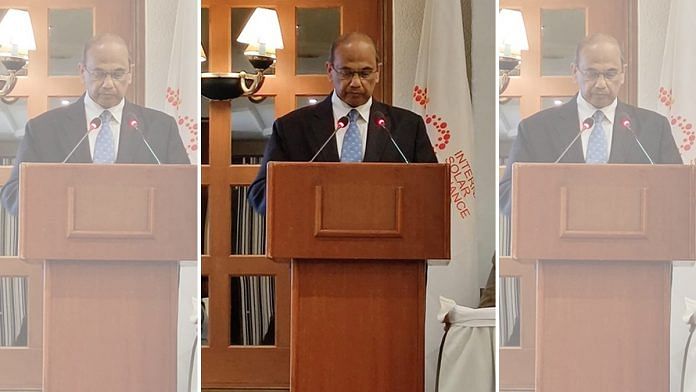New Delhi: The International Solar Alliance (ISA), a treaty-based international intergovernmental organisation, hopes to get political backing for its proposed trans-national solar power grid at the UN’s climate meet (COP26) in Glasgow later this year, the organisation’s Director General Dr Ajay Mathur told ThePrint in an interview Monday.
ISA, launched by PM Modi and former French President Francois Holland in 2015 on the sidelines of the Paris accord, aims to promote solar energy in 121 tropical countries.
The proposed trans-national solar power grid, known as One Sun One World One Grid, envisions an interconnected system of regional solar grids across the world, Mathur said.
“When evening falls, that’s when we have the maximum electricity demand in India … However, there is sun shining in Saudi Arabia. So if you can connect the Gulf countries to India, it means we could get renewable energy even though the sun is not shining,” he explained.
He added that the proposed “global green grid” will be a key part of the ISA’s next annual meet on 20 October this year.
One of the many takeaways of the UN’s recently released IPCC report is that countries in South Asia, such as India, will be particularly vulnerable to extreme weather events like rainfall and heatwaves in the decades to come.
Asked if India is prepared for extreme weather events and disasters, as seen with the major glacial burst in Uttarakhand earlier this year, Mathur said: “India is far better prepared than it was a decade ago.”
He added that urban and rural planning, as well as local ponds, will be key in withstanding natural disasters.
Also read: Mathura summers & sustainability — how Pooja Goyal links both at US investment giant Carlyle
Path to India’s 2030 renewable energy target ‘not smooth’
Last Friday, the Indian government announced it has installed 100 GW renewable energy capacity, inching closer to its target of 175 GW of renewable energy capacity, including wind, solar, and hydro, by 2022.
The government has also set a target of 450 GW renewable energy capacity by 2030, meaning 60 per cent of India’s power capacity will be from renewables in the next nine years.
Asked if India is on a smooth trajectory to achieve its target of 450 GW by 2030, Mathur said, “No, it’s not going to be smooth.”
“This depends on the cost of round-the-clock renewable energy — that means renewables plus battery storage … which is competitive with the cost of fossil fuel-based electricity — gas or coal,” he explained.
According to an analysis by Bloomberg New Energy Finance (BNEF) in June, there is an overall trend showing that renewable power prices will become increasingly competitive with fossil fuels.
It noted that the cost of power from solar panels fell four per cent from the second half of 2020. “In the next four years, we will see this competitiveness occur and then we’ll see a sudden growth in capacity to occur even after that,” Mathur said.
(Edited by Arun Prashanth)
Also read: Mathura summers & sustainability — how Pooja Goyal links both at US investment giant Carlyle






